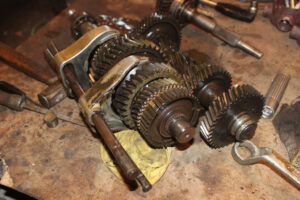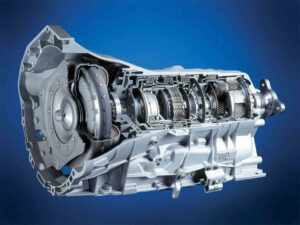What to know about speed transmission: pros and cons of your device
A transmission is a mechanism that delivers regulated power application in a power transmission system. Manual transmission with more «maximum speed» or gears allows you to drive quicker at slower Speeds. There are three types of transmission such as manual, automatic, and CVT transmissions, each tailored to different purposes and driving styles. An automobile transmission ensures that your engine rotates at the appropriate pace for your requirements, without driving too fast or too sluggish. It also assures that the proper amount of power is delivered to your wheels. Any car would be impossible to start and stop without a gearbox and would be highly unreliable. A vehicle’s gearbox is one of its most crucial components. It is responsible for transferring energy from the motor to the wheels.
Manual 5 speed transmission:
A manual transmission is a variable speed transmission technique in which the driver must manually pick the ratios by moving a gear stick and clutch. Manual transmissions require less maintenance and do not require the same sort of oil as automated gearboxes. Stick-shift vehicles often outlast automated vehicles of the same make and type. The manual 5-speed transmission is a gear system with five forward gear ratios. The top speed is set to 65 mph (105 km/h). Use this to get the most power and traction. Although manual transmissions are built to last a long time, your driving habits might influence the quality of life you get out of the transmission. Manual transmission vehicles necessitate shifting gears with the shift lever.
How does it work?
Sustaining highway driving speeds is essential in fifth gear. For proper functioning, the manual gearbox is coordinated in all forward ratios. It has a limiter, so you can’t go from Fifth to Reverse. A five-speed manual shifter transmission offers the convenience of a gearbox with the sportiness and greater fuel efficiency of a manual transmission. On a five-speed transmission, there is a collar between the first and second gears, the third and fourth gears, and the fifth and reverse gears. When you move an automobile into gear, the positioner collar adjusts to the moving gear you want to connect. Attempt to shift between 200 and 300 RPMs before reaching the optimum energy for each transmission.
Advantages of manual 5-speed transmission:
- Economical — Manual gearboxes have typically been less expensive than automated transmissions. A vehicle of the same specific model with an automatic gearbox may cost more than a vehicle with a manual transmission. Since manual gearboxes have less intricate parts that are easier to make, they are less expensive for you.
- Greater Gas Mileage — Manual gearbox users have greater control over how their car operates. Manual gearboxes often outperform their automatic counterparts by 3-4 miles per gallon.
- Cheaper to Maintain – Because a stick shift has fewer moving components, it is easier to maintain. Manual transmissions require minimal maintenance to be operational, and automobiles with a stick shift typically last longer.
- Better Handling — Having a stick shift might provide drivers with an edge in inclement weather or on a slippery road.





